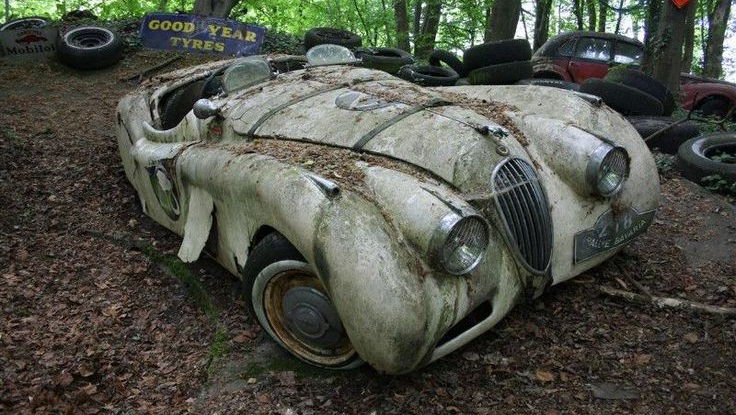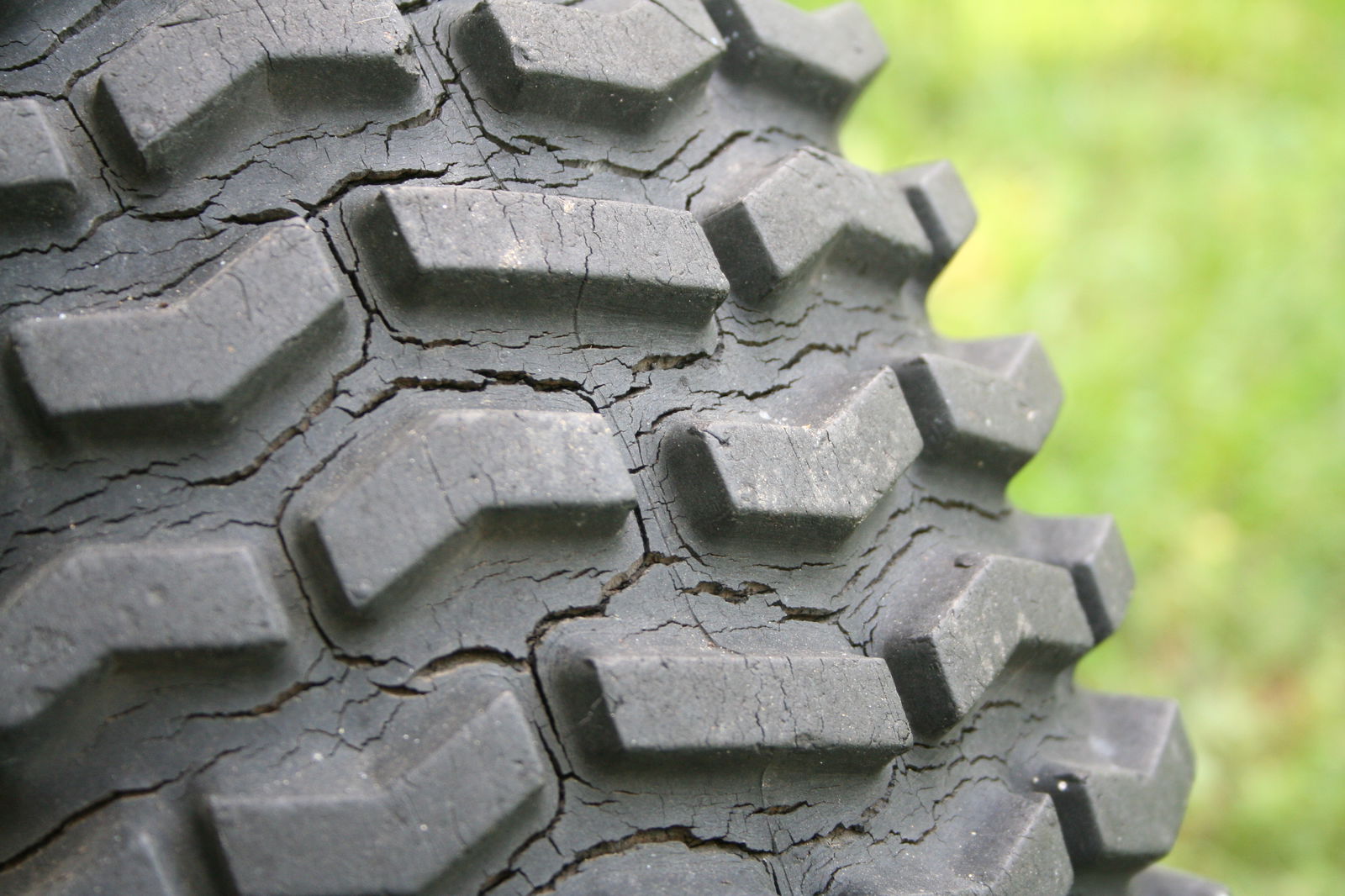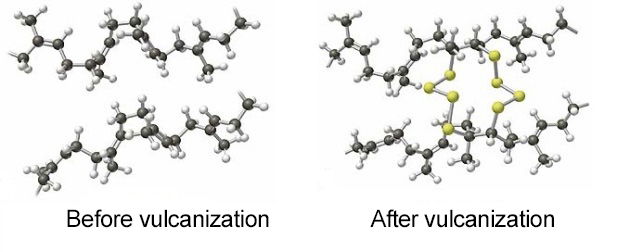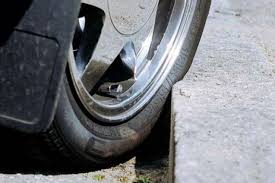What Causes Tyres To Degrade Over Time?

Considering tyres are your car’s only contact patch with the road surface, it’s safe to say they should never be taken for granted or forgotten about. Take into account the sheer amount of beating that those circles of rubber have to take day after day - it is not difficult to realise tyres will degrade over time.
Even while simply sitting stationary on a driveway, car tyres are susceptible to wearing down and cracking to a point where they become unusable. You will have all seen that one unused classic car in your neighbourhood (mine is a British Racing Green Jag XJ-S) that sits for years without turning a wheel, with once vibrant tyres sadly deflated, cracked and slumped into the tarmac.

So what causes tyres to reach that stage of degradation? Let’s take a look at the construction of a tyre first of all. With the major ingredient obviously being rubber, there are also layers of metallic ‘beading’ that strengthen the walls of the tyre but still allow for a given amount of flex in the compound.
If you’ve ever seen the aftermath of a tyre blowout, you will probably have noticed the splintered ends of the beading protruding from the hole in the tyre, showing that somewhere down the line the compound has failed due to a spike in air pressure from overheating or some form of puncture which has caused the rubber-beading relationship to fail.

In terms of degradation, we must remember that rubber is an organic material taken from trees and therefore will naturally want to biodegrade. Although the rubber is reinforced and mixed with other polymers to make it suitable to hold high pressure and deal with the load that a car can apply, at its core it is a natural substance that wants to change state after a period of time.
You may notice that as tyres degrade, the compound becomes stiffer and therefore more brittle. Go up to that sleeping classic car and try to kick its tyres; you better be wearing your steel-capped boots. This is due to a process called vulcanisation. Despite sounding like a sci-fi torture method, vulcanisation is a manufacturing process of hardening rubber using sulphur or other ‘accelerators’ which creates further bonding between the molecules that make up the rubber compound, making it suitable for the required loads to be applied across it by adding strength and flexibility.
This is accomplished by heat and pressure at the tyre factory but as the tyre absorbs energy through light, heat and friction over the years, the compound continues to vulcanise over time and amounts to the tyre eventually stiffening to a point where cracks appear.

Next on the list of degradation causes is oxidisation of the rubber. The combination of oxygen and ozone compromises the strength and flexibility of the rubber, along with the bond between the beading and the rubber compound. The coupling of heat and oxygen results in crosslinking between the rubber polymers which again hardens the compound to a point where the outer edges become brittle and cracked.
The last natural cause of tyre death comes in the form of water. Rubber is deemed as waterproof, but after years of use water can permeate into the tyre, bonding with the metallic areas within the tyre and therefore causing the bond with the surrounding rubber to deteriorate. This will all lead to a lack of heat resistance and strength within the compound and will ultimately result in a damaged tyre.

One rookie error that can be seen often is the semi-kerbed tyre, where a wheel has been forced into a kerb during parking and left overly-pressurised by the invading pavement. This decrease in volume of the tyre will lead to an increase in the air pressure within the tyre walls. This leads to enhanced oxidisation and force the compressed air to seek out the weaknesses within the rubber compound from general degradation, resulting in an accelerated rate of deterioration.
Another forced affliction on tyres can be over or under pressurising. Tyres lacking in pressure will create large amounts of heat due to an increase in friction from a larger contact patch with the tarmac, eventually leading to tyre wear. Over-pressurised tyres will inflict stress levels onto the metallic beading and tyre walls that the original tyre was not designed for and could potentially lead to dangerous bulges in the side walls and almost inevitably a blow-out down the line.

Even if a car is sat stationery or laid dormant on a driveway for years, sheer laziness, ignorance or the attack of nature on a tyre will cause them to degrade with tyre life-expectancy estimated to be around six to ten years from new. Companies like Bridgestone and Pirelli will advise you to change any tyre showing signs of degradation which include cracking in the tyre side walls and cracking within the tread itself, showing areas of weakness in a tyre which could potentially have up to 40 psi barely contained within.
So instead of neglecting the four corners of your car, assess the age of your tyre through the barcoding on the tyre wall (the numbering 1204 would mean the tyre was manufactured in the twelfth week of 2004, and so on) and check the overall condition of the compound, looking for any signs of cracking or bulging. Look after your tyres and they’ll look after you.
Comments
That was a chemistry lesson.
Seeing this Jaguar like this unleashes the most profound sadness in my heart..
What shampoo do tyres use?
TREAD AND SHOULDERS.
just to say, if the date code on the side of the tyre said 1204 it would mean the 12th week of 2004. not month, so would have been made some time late March of 2004
My grandpa have 1979’ spare wheel in his Audi - with a nice OEM wheel ;)
1204 would mean it was made in the 12th week of 2004. Just sayin.
So what about tyres that have been left on the shelf for a couple of years, in the dark. Will they age the same as used tyres due to influences like oxigen and vulcanisation?
The real manly man’s test is to try to reach minimum thread depth by doing burnouts on old tyres without them exploding on you.
Who would be up for the challenge?
Make sure to apply tire shine to the tread to prevent cracking
Make sure you regularly top off your tire grease too…dont want them getting to dry!
Pagination